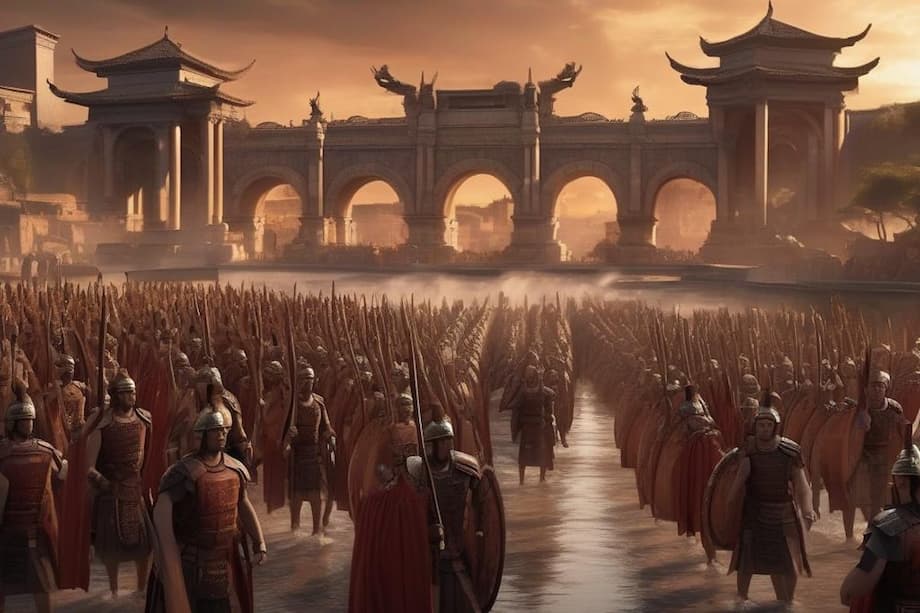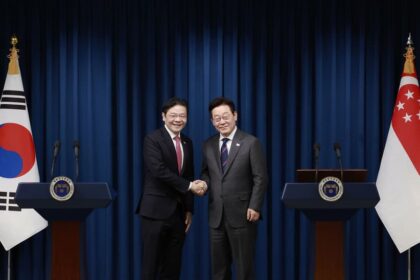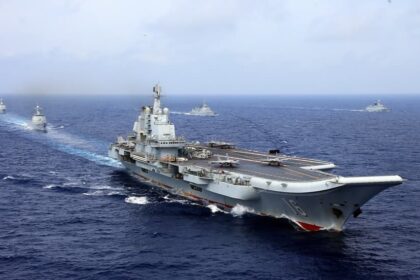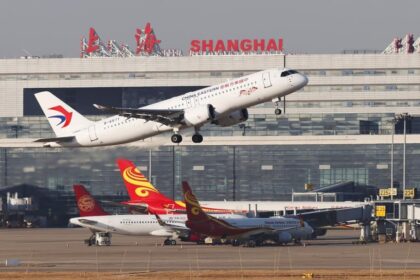Why these empires looked similar yet ended up so different
Two thousand years ago, vast populations lived under two colossal states at opposite ends of Eurasia, Rome in the Mediterranean world and Han in East Asia. Their broad resemblance still fascinates. Both commanded tens of millions of people, both built long roads and canals, both standardized taxes and law, and both left legacies that endure. Yet their trajectories parted. The western Roman Empire fragmented into successor kingdoms, while China cycled through breakdown and reunification under new dynasties.
- Why these empires looked similar yet ended up so different
- Geography set the stage
- How armies shaped society
- Governing at scale
- Money, inequality, and the cost of empire
- Work, slavery, and production
- Roads, rivers, and the silk connection
- When things fall apart
- Ideas of virtue, fame, and order
- The past beneath our feet
- What to Know
Recent scholarship moves beyond anecdotes to measure how these states worked. Economists and historians have reconstructed income distributions, mapped administrative layers, and compared military and fiscal practices. The findings link geography, institutions, and inequality to different outcomes in resilience and unity. The lesson is not cultural superiority. It is the way environment and organization channeled power.
The comparison begins with the worlds these empires had to master. The Mediterranean was a sea of islands, peninsulas, and rival harbors. The North China Plain was a vast land of rivers, loess soils, and open steppe frontiers. Those starting positions mattered for everything that followed.
Geography set the stage
In the Mediterranean, the sea joined and divided at the same time. Greeks and Phoenicians turned coastal geography into a network of markets, ports, and colonies. The Romans built on that platform. Seamanship and caravan trade created societies that mixed warriors with merchants. Decision making rewarded teamwork and discipline at the oar and in the ranks. Institutions with checks on a single hand at the helm appeared early. Sparta had two kings. Republican Rome had two consuls.
On the North China Plain, fertile fields met the pressures of the steppe. To the north and west lay grasslands and deserts. To the south and west lay mountains and jungles. The core zone could feed large populations, but it also flooded, silted, and shifted. That environment rewarded steady organization, long term planning, and a powerful center able to mobilize labor for canals, levees, and walls. Qin and then Han rulers standardized weights, measures, scripts, and axle widths to bring far regions into one system.
Political geography pulled in different directions. Around the sea, strong city coalitions and regional kingdoms regularly rose to power. Durable unification of the full basin happened once, under Rome. Across the Chinese plain, the model of a single realm returned many times. Dynasties fell and rose, but the ideal of unity remained the default.
How armies shaped society
Military organization taught citizens how to cooperate and who to obey. The Greek hoplite phalanx fused personal courage with neighborly discipline, a formation of peers who survived by holding a line together. Roman legions evolved beyond the phalanx into maniples and cohorts, but they preserved the idea that training, shared duty, and unit honor bound soldiers as comrades. Over time, Rome extended citizenship and military careers to provincials, which deepened loyalty to the imperial order.
In China, war in the Warring States period reshaped society in a different way. Rulers mobilized huge infantry forces and mounted archers within a command chain that stressed hierarchy and obedience to the throne. Philosophers wrestled with that reality. Mohists argued for defensive warfare, merit, and saving lives through fortification and careful logistics. Confucian thinkers emphasized ritual order and humane rule. The language of brotherhood among equal fighters mattered less than the language of duty within a graded family of state and society.
The two traditions built fortifications that fit their maps. Rome invested in roads, river fleets, and frontier lines from Britain to the Euphrates. China strung walls and garrisons across northern corridors while keeping riverways and granaries in good repair. In both systems, the army was a school of the state.
Governing at scale
Rome governed many peoples through a mix of military authority and municipal self rule. Provincial governors, legionary commanders, and a class of local notables collected taxes, dispensed justice, and kept order. Roman law set expectations across borders. By the third century, citizenship had spread widely, yet the sword still did much of the daily work of empire.
Han China built a different spine. The emperor sat at the ritual center as the Son of Heaven. A trained civil service staffed the counties and commanderies. Examinations in the later imperial era would formalize recruitment, but even in Han times officials were chosen for learning, record, and recommendation. Scholars estimate that some 130,000 professional administrators worked for the Han state, an apparatus much more civilian than Rome’s.
Religion did not run either empire. It was harnessed. China received Buddhism and made it part of a wider moral world alongside Confucian and Daoist teachings. Rome confronted Christianity, which shifted from persecuted to imperial faith. Spiritual currents changed political culture, yet administrative habits and fiscal needs shaped daily governance more than doctrine.
Money, inequality, and the cost of empire
Recent research reconstructs income distributions for the Roman Empire around 165 CE and for Han China around 2 CE. The Roman average income seems to have been about 2.25 times subsistence, compared with about 1.88 in Han. Inequality differed as well. In Rome, the top 1 percent took about 19 percent of total income. In Han, the top 1 percent took about 26 percent. Gini coefficients, which measure inequality on a scale from 0 to 1, come in at 0.46 for Rome and 0.48 for Han. An extraction ratio that gauges how much elites captured relative to the theoretical maximum is estimated at 69 percent for Rome and 80 percent for Han.
Policy and geography help explain the gap. Roman rulers leaned on provincial elites and spent heavily on soldiers posted far from the capital. Military pay, supplies, and building works moved money into frontier regions. Trade and urban life created middling opportunities. Han rulers pulled powerful families closer to the court and kept a tighter grip on provincial resources. Uniform land taxes and big budget shares for the capital region tended to concentrate wealth at the center. A large bureaucracy absorbed revenue that might otherwise have circulated on the periphery.
Distribution patterns had political effects. After 2 CE, the Han order faced fiscal strain, peasant uprisings, and civil war. The Red Eyebrows rebellion and later conflicts fractured the realm. Rome did not escape crisis, but a long stretch of relative peace often called the Pax Romana aligned with the period of flatter distribution and broader spending across the provinces. Inequality did not cause collapse by itself, yet high extraction made fragile regions easier to destabilize.
Work, slavery, and production
Rome drew wealth from land, conquest, and the labor of enslaved people. Large estates worked by gangs shaped countryside economies in Italy and many provinces. Slaves filled urban workshops and households. Conquest fed the labor supply and delivered booty that kept aristocrats loyal and soldiers rewarded. Coinage in gold, silver, and bronze facilitated long distance trade and tax collection.
Han China relied on peasant households tied to fields and to corvee duties for the state. Officials managed or supervised key sectors such as salt and iron, a strategy defended in the famous Salt and Iron Debate. Mass production of iron tools and weapons raised farm yields and military capacity. Paper emerged in Han times, transforming record keeping and administration. The state invested in granaries and canals to stabilize prices and move grain.
Different labor regimes shaped status. In Rome, landowning senators and equestrians anchored the elite, but wealthy merchants and artisans drove city life. In China, education and office defined rank, and merchants often stood lower in prestige even when rich. That moral economy channeled ambition into schooling and service more than commerce.
Roads, rivers, and the silk connection
Infrastructure was empire made visible. Roman engineers carved roads that tied cities, forts, and markets together and built ports that turned the sea into a highway. Chinese officials dredged rivers, linked canals, and kept causeways passable across floodplains. Both networks sped tax grain and troops to where they were needed. Wall systems, from the limes in the west to the long wall lines in the east, signaled where authority ended and uncertainty began.
Trade linked the two worlds indirectly. Chinese silk reached Roman elites, and Roman glassware and coins have turned up far to the east. Envoys who claimed to represent Rome appeared in Chinese records as visitors from Daqin, but regular direct contact was rare. Most exchange ran through Central Asian caravans and Indian Ocean shipping.
When things fall apart
Both empires suffered stress from internal fights and pressure on the frontiers. Rome’s third century brought rapid turnovers of emperors, invasions, and inflation. The empire later split into western and eastern halves. The western half fractured into successor kingdoms. In China, the usurpation by Wang Mang broke the former order, the Later Han fell into the Three Kingdoms, and centuries of division followed. Yet the ideal of a single realm endured. Reunification came under Sui and then Tang.
Scholars point to a turning point in late antiquity. In the era of Sui and Justinian, China was moving back toward unity while Europe was moving toward lasting fragmentation. Geography played a part, but so did administration, revenue systems, and elite bargaining. The Mandate of Heaven legitimated the replacement of a failing house without questioning the idea of empire. The Roman West did not retain a single accepted principle that could rebind its many parts.
Ideas of virtue, fame, and order
Values shaped policy. Roman elites celebrated civic honor, public monuments, and a quest for lasting fame. Stoic ethics encouraged duty to the commonwealth. Heroic narratives kept military glory near the center of political life. Chinese elites prized moral cultivation, filial piety, and harmony. Confucian texts taught rulers to moderate punishments, lighten burdens, and keep the people alive. Mohists urged impartial care and practical defense. Legalist writers emphasized clear laws and firm rewards and penalties. The combined effect was a politics that weighed social order and bureaucratic performance at least as heavily as charismatic daring.
The past beneath our feet
Archaeology keeps widening the lens. In recent months, Chinese authorities authenticated a Qin era inscription carved on rock at high altitude in the upper Yellow River region. The text recorded an imperial mission tied to sacred Kunlun. It is rare physical proof of how far the first centralized dynasty projected authority and ritual imagination into the landscape.
Urban life in Xi’an, the site of ancient Chang’an, shows how the past still shapes the present. Subway builders and airport crews routinely discover tombs and artifacts by the thousand. Instead of moving everything away, curators now present many finds in situ for commuters and travelers. Digital tools help restore the colors and textures of the Terracotta Warriors and preserve fragile knowledge. Across the Mediterranean, similar layers of Roman roads, walls, aqueducts, and theaters anchor towns and legal customs to this day. These material footprints remind us that both empires still live in the way people build, write, worship, and argue about law.
What to Know
- Rome and Han ruled comparable populations and existed in overlapping centuries.
- Mediterranean maritime geography encouraged many competing centers, while the North China Plain favored repeated unification.
- Roman government relied on provincial elites and military authority, Han government leaned on a large civilian bureaucracy.
- New estimates show slightly higher inequality and extraction in Han China than in Rome, with Gini at 0.48 versus 0.46.
- Roman military spending redistributed income to frontier regions, while Han spending focused more on the capital region.
- Rome used slave labor widely, China depended on peasant households and state managed industry such as salt and iron.
- Exchange between the empires was indirect through Central Asia and the Indian Ocean, not through sustained direct contact.
- After crisis, China returned to unity under Sui and Tang, while Europe remained divided after the western Roman collapse.
- Archaeology in Xi’an and across former Roman lands shows how both empires still shape infrastructure, law, and identity.
- Geography, institutions, and inequality together help explain why these similar looking empires ended up on different paths.












